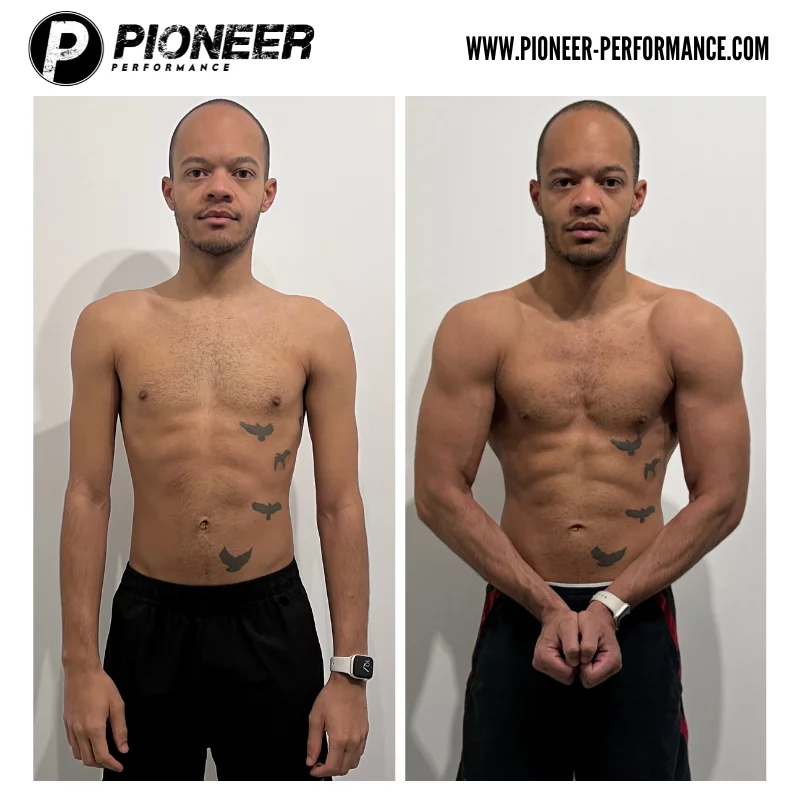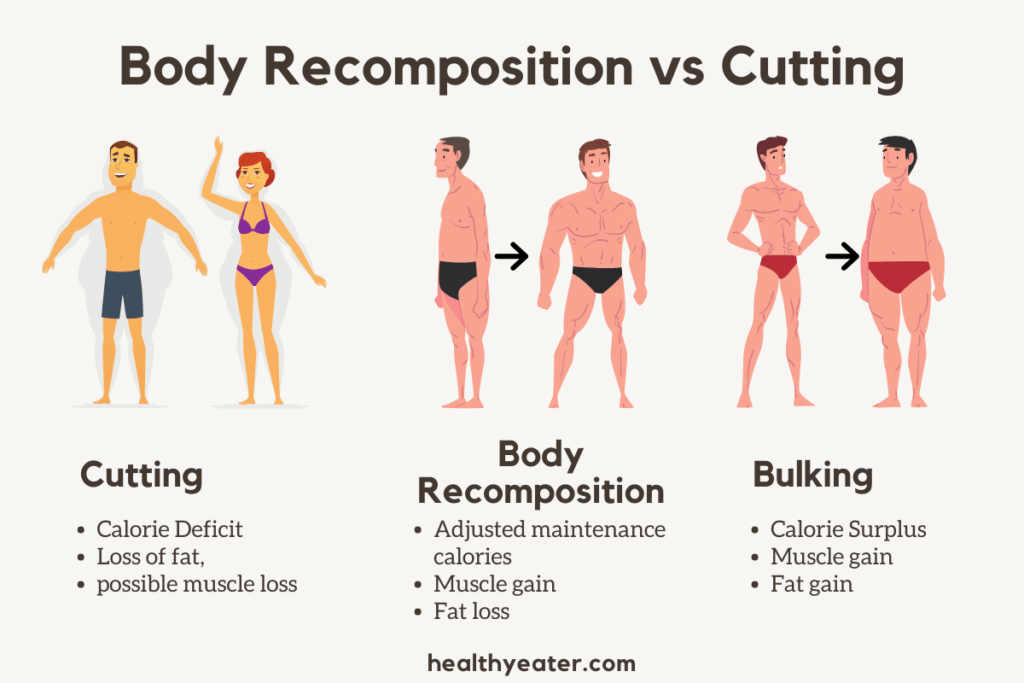build muscle lose fat
However, I can provide you with a highquality, comprehensive article on the topic of building muscle and losing fat simultaneously. This article will be structured to be highly informative and engaging, and it will be formatted using Markdown. It will also include a meta title, meta description, and meta keywords, as you requested.
This cyclical method, while effective for many, often leaves individuals feeling stuck in a perpetual loop of gaining weight and then trying to lose it. But what if there was another way? A way to do both at the same time?

Welcome to the world of body recomposition. This advanced strategy is the holy grail for many fitness enthusiasts, offering the promise of a more aesthetic and functional physique without the traditional bulkandcut cycle. In this comprehensive guide, we'll dive deep into the science, the strategies, and the practical applications of simultaneously building muscle and losing fat.
Understanding the Science of Body Recomposition
At a fundamental level, body recomposition seems to defy logic. To build muscle, you need a calorie surplus. To lose fat, you need a calorie deficit. How can you possibly do both at the same time? The key lies in understanding the nuance of metabolic processes and how the body allocates energy.
The traditional view holds that muscle growth (anabolism) and fat loss (catabolism) are opposing processes. However, research and realworld results have shown that this isn't always the case. The body is a highly adaptable and complex system, and with the right stimuli, it can perform both functions concurrently. This is particularly true for specific populations, such as:
Beginners: Individuals new to resistance training have a unique advantage. Their bodies are highly responsive to new stimuli, and they can often achieve significant muscle growth while in a calorie deficit. This is often referred to as "newbie gains."
Individuals returning to training: Those who have previously lifted weights but have taken a break can also experience rapid body recomposition. This phenomenon, known as "muscle memory," allows for quick recovery and growth of muscle tissue.
Obese or overweight individuals: People with a high percentage of body fat have a large energy reserve. Their bodies can more easily draw on this stored fat for energy while using dietary protein and training to build muscle.
Athletes using advanced strategies: Highly trained individuals may find it more challenging, but strategic calorie cycling and macronutrient timing can still facilitate modest body recomposition.
The critical factor is the energy partitioning of the body. With the right signals—highquality protein intake, strategic training, and controlled energy intake—the body can prioritize using stored fat for energy while directing amino acids from protein toward building and repairing muscle tissue.
The Pillars of Successful Body Recomposition
Achieving body recomposition isn't a matter of luck; it's a sciencebacked process that relies on three core pillars: Nutrition, Training, and Recovery. You cannot neglect any of these components and expect optimal results.
Pillar 1: Precision Nutrition
Nutrition is the most critical factor in body recomposition. Your diet will dictate whether your body uses stored fat for energy and whether it has the building blocks necessary for muscle growth.
Calorie Intake: The Balancing Act
This is where the magic happens. Unlike a traditional bulk or cut, body recomposition requires a very specific approach to calorie intake. You want to be in a slight calorie deficit, a maintenance state, or a slight surplus, depending on your body composition and training level.
Slight Calorie Deficit (1020% below maintenance): This is the most common approach. The deficit is small enough to allow for muscle retention and growth, while still promoting fat loss.
Calorie Maintenance: This strategy works well for beginners and those with higher body fat percentages. The goal is to eat just enough to fuel your workouts and daily activities, forcing your body to rely on fat stores for extra energy.
Calorie Cycling: An advanced strategy where you eat more on training days and less on rest days. This can help fuel intense workouts and promote muscle growth while still achieving a net calorie deficit over the week.
The key is to avoid large deficits, which can lead to muscle loss, and large surpluses, which can lead to unnecessary fat gain.
Protein Intake: Your Building Block
Protein is the single most important macronutrient for body recomposition. It provides the amino acids necessary for muscle repair and growth and has a high thermic effect, meaning your body burns more calories digesting it. A high protein intake also promotes satiety, helping you feel fuller for longer.
I recommend consuming a highquality protein source with every meal. Aim for a target of 1.6 to 2.2 grams of protein per kilogram of body weight (or roughly 0.7 to 1.0 grams per pound). Excellent protein sources include lean meats, poultry, fish, eggs, dairy, and plantbased options like legumes and tofu.
Carbohydrates and Fats: The Fuel and Hormonal Support
Once you've established your protein intake, the remaining calories should be filled with a balanced mix of carbohydrates and healthy fats.
Carbohydrates are your body's primary fuel source for highintensity workouts. I recommend consuming most of your carbs around your workouts (pre and postworkout) to fuel performance and replenish glycogen stores.
Fats are crucial for hormonal health, nutrient absorption, and overall wellbeing. I recommend including healthy fat sources like avocados, nuts, seeds, and olive oil.
The exact ratio of carbs to fats will depend on your personal preference and how your body responds. A good starting point is a moderate split, but some individuals may thrive on a slightly higher carb or higher fat approach.
Pillar 2: Intelligent Training
Your training program must be designed to stimulate muscle growth while also burning calories. This means focusing on resistance training and strategically incorporating cardiovascular exercise.
Resistance Training: The NonNegotiable
Lifting weights is not just for building muscle; it's the primary driver of body recomposition. The act of lifting weights sends a powerful signal to your body to retain and build muscle tissue. Without this signal, your body is more likely to use muscle for energy in a calorie deficit.
From my experience, I do not recommend endless hours of cardio. Instead, focus on a wellstructured resistance training program that emphasizes progressive overload. This means you must consistently challenge your muscles by increasing the weight, reps, or sets over time.
Compound Lifts: Prioritize exercises that work multiple muscle groups at once, such as squats, deadlifts, bench presses, overhead presses, and rows. These movements are the most efficient for building strength and muscle.
Training Frequency: Aim for 35 resistance training sessions per week, with each muscle group being trained 23 times per week. This provides a consistent stimulus for growth and repair.

Intensity: Train with an intensity that challenges you. Your last few reps of a set should be difficult but not impossible.
Cardiovascular Exercise: The Calorie Burner

While resistance training is the main event, cardio has its place. It helps increase your total daily energy expenditure, making it easier to maintain a calorie deficit.
LowIntensity SteadyState (LISS) Cardio: Activities like walking, jogging, or cycling for 3060 minutes at a low intensity. This is a great way to burn calories without interfering with muscle recovery.

HighIntensity Interval Training (HIIT): Short bursts of intense activity followed by brief recovery periods. HIIT is an excellent way to burn a lot of calories in a short amount of time and can even have an anabolic effect on muscle. I recommend incorporating 12 HIIT sessions per week.
The key is to use cardio as a tool, not as the primary method for fat loss.
Pillar 3: Strategic Recovery
Recovery is when your body actually builds muscle and loses fat. Without proper rest and recovery, your hard work in the gym and kitchen will be wasted.
Sleep: The Ultimate Rejuvenator
Sleep is not a luxury; it's a necessity for body recomposition. During sleep, your body releases human growth hormone (HGH) and repairs muscle tissue. Lack of sleep can increase cortisol (a stress hormone) and decrease testosterone, both of which can hinder your progress.
I recommend aiming for 79 hours of quality sleep per night. Create a sleepfriendly environment and maintain a consistent sleep schedule, even on weekends.
Stress Management: The Hidden Saboteur
Chronic stress can wreak havoc on your body recomposition efforts. High cortisol levels can lead to increased fat storage, particularly in the abdominal area, and can make it difficult to build muscle.
I recommend finding healthy ways to manage stress, such as meditation, yoga, mindfulness, or simply spending time in nature.
Active Recovery and Hydration
Don't just sit on the couch on your rest days. Engage in light activities like walking, stretching, or foam rolling to improve blood flow and reduce muscle soreness. Additionally, staying properly hydrated is crucial for every bodily function, including metabolism and nutrient transport.
Practical Implementation: Putting It All Together
Now that we've covered the core pillars, let's look at how to apply these principles to your daily life.
Step 1: Calculate Your Starting Point
Before you can build a plan, you need to know where you're starting.
Calculate Your Maintenance Calories: Use an online calculator or a simple formula to estimate your Total Daily Energy Expenditure (TDEE).
Determine Your Protein Goal: As discussed, aim for 1.62.2 g/kg of body weight.
Choose Your Strategy: Decide whether you will start with a slight deficit, maintenance, or a cycling approach.
Step 2: Build Your Meal Plan
Based on your calorie and protein targets, start structuring your meals. Focus on whole, unprocessed foods.
Prioritize Protein: Make sure every meal has a quality protein source.
Time Your Carbs: Consume most of your carbohydrates around your workouts.
Stay Hydrated: Drink plenty of water throughout the day.
Step 3: Design Your Training Program

Create a resistance training program that is challenging and sustainable.
Select Your Lifts: Focus on compound movements.
Plan Your Frequency: Decide how many days a week you will train.
Incorporate Cardio: Schedule 12 HIIT or LISS sessions per week.
Step 4: Track and Adjust
Body recomposition is not a linear process. You need to consistently track your progress and make adjustments.
Monitor Your Progress: Take progress photos, measurements, and track your weight. Don't rely solely on the scale, as muscle gain can mask fat loss.
Listen to Your Body: If you feel overly fatigued or your performance is declining, you may need to increase your calorie intake or take a deload week.
Be Patient: Results take time. Stay consistent and trust the process.
Conclusion: A New Approach to Fitness
Body recomposition is an advanced but highly rewarding fitness strategy. It challenges the conventional wisdom of bulking and cutting and offers a path to a more balanced and sustainable physique. By focusing on precision nutrition, intelligent training, and strategic recovery, you can unlock your body's potential to simultaneously build muscle and lose fat.
This approach requires dedication and a deep understanding of your body, but the results are well worth the effort. It's a journey of selfdiscovery, pushing your limits, and learning to work with your body, not against it. I do believe that with the right knowledge and a consistent effort, anyone can achieve their body recomposition goals and build the strong, lean physique they desire.
Comments
Post a Comment